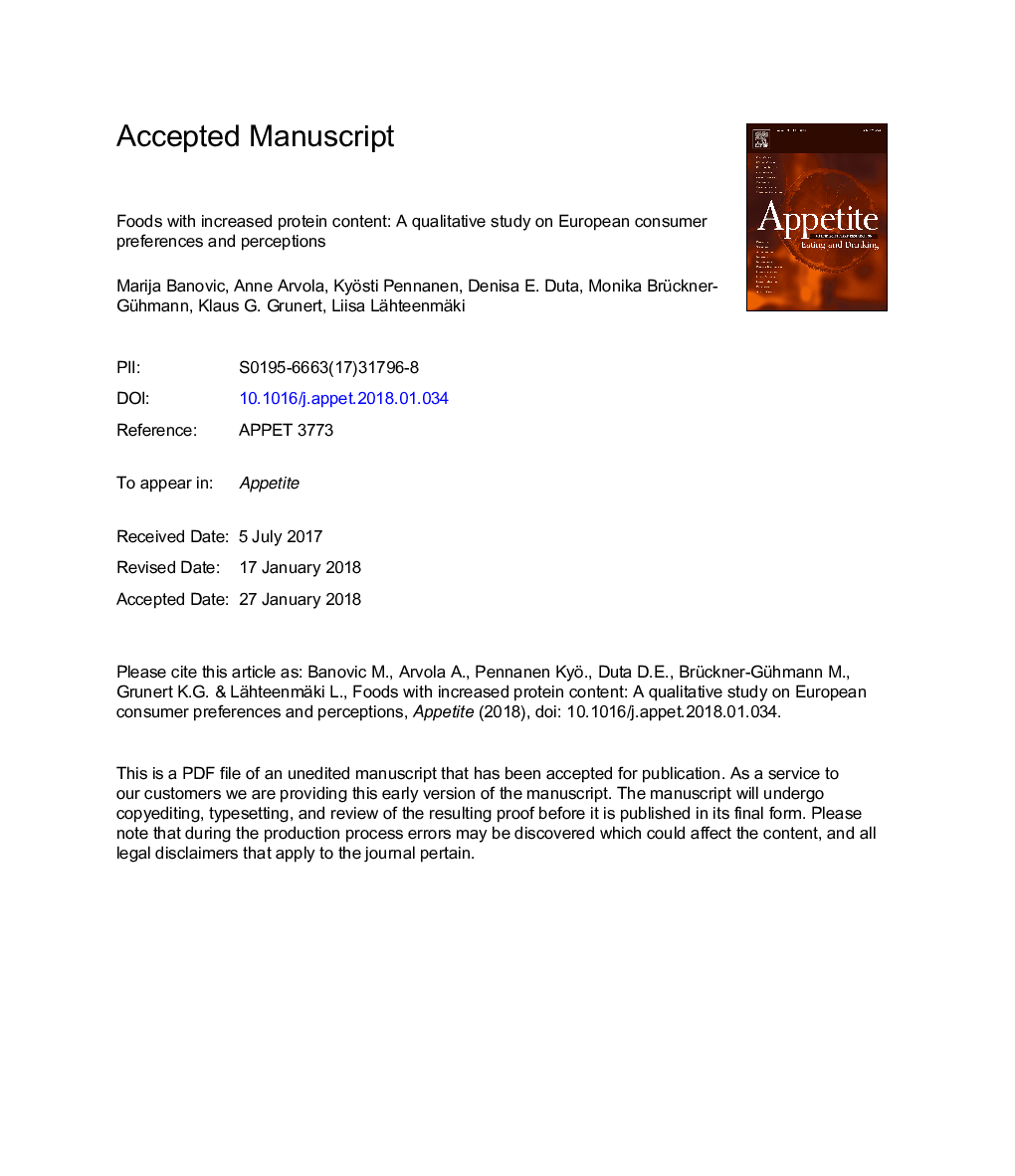| Article ID | Journal | Published Year | Pages | File Type |
|---|---|---|---|---|
| 7305784 | Appetite | 2018 | 30 Pages |
Abstract
Foods with increased protein content have rapidly become one of the fastest-growing product categories targeting image- and health-focused consumers. However, it is not clear whether consumers really understand the difference between 'inherently rich in protein' and 'artificially increased protein'. This study used a qualitative focus group approach to investigate the consumer preferences and perceptions of foods with increased protein content among mixed-age and older population in four European countries. In total fifty-two participants were involved in the study. Understanding of the concept of foods with 'increased protein' content was limited. Both older and mixed-age participants could not differentiate between natural sources of protein and foods with increased protein content, no matter whether foods with animal or plant proteins were mentioned. Older participants expressed more scepticism towards foods with increased protein content than mixed-age participants. The combination of protein type and food carrier closer to conventional foods received more acceptance among both older and mixed-age participants. Future use and acceptance of foods with increased protein content will depend on the extent to which consumer concerns about incorporating additional protein into a diet can be responded.
Keywords
Related Topics
Life Sciences
Agricultural and Biological Sciences
Food Science
Authors
Marija Banovic, Anne Arvola, Kyösti Pennanen, Denisa E. Duta, Monika Brückner-Gühmann, Liisa Lähteenmäki, Klaus G. Grunert,
